Stonefield bass maker talks about his musical background and his company’s story
Exclusive interview with FBPO’s Jon Liebman
December 28, 2020
Tomm Stanley is the man behind Stonefield Musical Instrument Company. His New Zealand-based manufacturing company is well known for its uniquely designed electric basses, as well as amp cabinets and passive outboard electronics. A musician himself, Stanley learned to play the guitar at age 12 and picked up the bass in his late teens. The idea to start manufacturing his own basses, however, came to him many years later while working at a U.S. research station in Antarctica. Today Stanley’s company offers several series of basses as well as custom-built instruments.
FBPO: Let’s start from the beginning. Are you originally from Florida?
Tomm: No, I was born in Milwaukee, Wisconsin. That’s where my family is based. I still have a lot of relatives, aunts, uncles, cousins in that part of the country, but we moved to Florida when I was around 12 years old. We’d gone down on a family holiday to Disney World. We came back and mom and dad decided they wanted to live there. Six or seven months later we moved to Florida.
FBPO: What’s your earliest recollection of your initial exposure to music?
Tomm: I remember the Jackson 5 when I was a kid. Of course, Michael Jackson was probably only about four or five years older than me. My first exposure was wanting to be a singer. I remember bouncing off the walls in my bedroom pretending to be singing Jackson 5 songs. I just always had an attraction to music, and that became stronger as I got into my teenage years. It was after we moved to Florida. I can recall the subdivision we lived in was in the area that used to be an old orange grove. Me and my friends would play in the trees, in the orange grove. I can recall sneaking past one of the houses where one of the big kids lived, and sort of sneaking past the house, getting back to the orange grove, I heard this music that I’d never heard before, just heavy rock. As it turned out it was, I don’t know, Ted Nugent, Aerosmith, Cheap Trick, something of that nature. It was one of those, “Oh man, I want to do that!” kind of moments. I just loved that music. And that really got me on the journey.
FBPO: Did you take formal music lessons?
Tomm: I had about six months of guitar, and this would have been around that same kind of period. Maybe I was about 13, 14 years old. Not until a year or so after we moved to Florida, after begging and begging, mom and dad finally caved and signed me up for guitar lessons. The unfortunate aspect there, of course, is I wanted to be a rock and roller and they signed me up for classical guitar lessons. At that age, I didn’t see the wisdom of learning those core skills and what classical music had to offer. Within about six months I was done with that. From that point on I was mowing lawns and cleaning swimming pools in the neighborhood for some income and bought my own first acoustic guitar. From that point, I’m pretty well self-taught.
FBPO: At what point did you discover the bass?
Tomm: I think I was 18, possibly 19 years old, when some friends that had a band. They had scored a gig at a big outdoor party, but for one reason or another their bass player had either fallen out with them, or I don’t know what the deal was, but they didn’t have a bassist. Their drummer, who I’m still friends with, got in touch and said, “Hey, we need a bassist for this gig. Would you be interested in buying a bass and an amp and maybe filling in for us on bass for this gig?” I’d never played live before, so I thought, “Oh, that is just so awesome! Yes I’m in.” I wasn’t quite prepared for how well I connected with the instrument as a tall person. I’m six foot seven. I’m right up there, large hands, large physique. The instrument just physically fit me. I just loved the feel of bass, the sound, that shake the walls kind of thing. As I got a little further into it, I began to really appreciate the bridging role that bass takes between the more melodic side of the music and the rhythmic side of the music. I was sold from that point. I’ve never really looked back. I didn’t touch a guitar again until I was in my forties.
FBPO: Did you have any bass influences, any bass-playing heroes?
Tomm: Early on, it was Stanley Clarke. A band I was playing in at the time – I know you’ve interviewed Clint Stewart – it was a band that Clint and I were in, in central Florida, called Electric Motion. I can remember Clint turning up to practice one day and handed me a cassette tape and saying, “You got to hear this.” He’s kind of got a cheeky smile on his face. I looked down at this, Stanley Clarke School Days, and I thought, “I’ve heard of this guy before. All right.” I took it home and it just changed the way I looked at the instrument from a tonal palette with Stanley playing groove lines, Stanley playing slap stuff, Stanley really digging in with his right hand plucking, really hard. That’s probably my biggest influence on what formed my playing style. Other than that, I listened to a wide array of music, from jazz and rock and blues, and it all meshed together, but I wouldn’t say there was any one particular influence. Of course, Billy Sheehan was big in that time period as well because he was coming out of Talas and into stuff in the bigger spotlight. His more aggressive kind of wild approach to bass, that would have had some influence. Jeff Berlin, too. I can recall some of the stuff that he did with Bruford really had an impact on me, where in many cases the bass is carrying the song. That influenced me too. Stanley and Jeff Berlin are probably the two that influenced my actual playing style the most.
FBPO: Knowing you and how your mind works, you must have been thinking, “Hey, I wonder if they could make this bass a little more like this, or if this thing over here was shaped a little more like that.” The tinkerer in you, am I right?
Tomm: One hundred percent. It wasn’t too long before I started wanting more out of my instrument. At that time, my instrument was a G&L SB-1. And I’ve got the one before they put the pointy thing on the headstock. Had I left it alone, it would probably have some collectible value now. However, that bass had additional pickups added to it. It had series/parallel switching added to it. It got phase switching added to it. I dug into the electronics pretty early on. It wasn’t long after that before I started reshaping the body. And that carried on with subsequent instruments. There was one bass that I have, it was an old Japanese P-bass copy that I got my hands on specifically for the purpose of tearing it apart, redoing it and experimenting.
FBPO: What inspired you to start your own bass company, Stonefield?
Tomm: Well, I guess it’s an extension of those early meddlings with the instruments. In 19—I’m trying to think what year—1993. I can place this specifically in my mind because of where I was when this happened. I was working a contract for the United States Antarctic Program. I was at McMurdo Station in Antarctica, and I had access to the carpenter shop because I was a material supervisor looking after construction crews at McMurdo and the South Pole stations.
FBPO: Did you remember to take a sweater?
Tomm: [Laughs] Yeah, I did. I just decided, I’ve wanted to do this for ages. Here I am, lots of time on my hands, so to speak when I’m not at work and access to a really wonderful carpentry shop. I got in there and I made a bass, but the trick was, back in 1993, especially if you’re somebody living in Antarctica, you’ve got no access to resources. There were very few resources, how-to books and things of that nature. There were a couple around, but I personally wasn’t aware of them at the time. I can remember sitting there and looking at a bass that I had with me and thinking, “How is this thing built?” It didn’t take too long. You realize pretty quick that it’s basically high quality carpentry.
FBPO: Sounds like you made the most out of what you had available to you.
Tomm: In the end I figured it out, and I built a bass. It wasn’t playable, that one, but it got me really thinking, “Oh man, all right, if I do this, and then sort of a couple little tweaks, I’ve got a playable instrument.” I built a second one and that was in the Antarctic winter of 1994. The station machinist made a bridge for me. I’ve still got that one too, so that was really cool. With that I thought, “Man, this would be so neat to do this for a living. And why not?” But I got back to the US after that, and some other things appeared on my potential work scope and that involved a contract that I picked up here in New Zealand. I came to New Zealand on a two-year contract the year after my second trip to the Antarctic.
FBPO: Obviously, you couldn’t shake the thought of being a bass maker.
Tomm: I still had this bass building thing in my mind, “That’s good, I’ll go to New Zealand for two years, work this contract out. When I come back I’m going to start this company.” And then another thing happened and another thing, and one thing leads to another. When I finally got around to Stonefield as a project with some intent, it was more like a midlife crisis. I was in my mid forties and thinking, “Man, if I don’t do this thing, I’m going to be wishing I had. I’m not getting any younger, so I better get it in gear and make this happen.” That’s when I started experimenting with, “What would I want in a bass?” That’s where the company’s slogan, The bass you’ve always wanted, came from.
FBPO: How would you describe a Stonefield bass? What makes it different from, I don’t know, a Fender, or a Gibson or any of the other basses out there?
Tomm: I went back to basics, I guess, is the way to put it. Rather than saying, “Well, here’s a Fender and this is what a bass is, and giving it a different body shape, trying to do something to make it balance better or whatever. Active electronics, that kind of stuff.” I actually sat and wrote out a list of things that, over the years, I’d wondered why these things are not on bass guitars. Floating bridges like you have on cellos, violins, archtop guitars. By that point, I was back to playing guitar, and I was playing archtops and the floating bridge on the archtop mimics, or is reminiscent of cellos and violins. If you get into a discussion with archtop guitar makers, the debate over metal in contact with strings, and its impact on tonality versus wood in contact with those strings, and the use of floating bridges versus fixed bridges. These arguments rang quite true to me because of my experience with the archtop guitars. I had always wondered, “Why can’t we have high, low and mid controls in a passive circuit?” I set about trying to figure that one out, “Can you get that midrange?” The high control, your normal control, on any guitar, bass, a passive one, rolls off your highs. Low controls had been done before, the high pass filter that removes low frequencies. The midrange seemed to be the Achilles heel for passive electronics. I set about trying to design a midrange circuit. Now, I’m not an electrical engineer. If you want to see a stressed out version of Tomm Stanley, just see me with a soldering iron in my hand. I’m getting better, but it’s always been a real challenge.
FBPO: What would you say really makes the Stonefield basses stand out from the rest?
Tomm: Number one, the first thing that probably stands out is the Tomm Stanley tuning system, which uses a tailpiece tuner that is absolutely the smoothest, easiest thing you can use. Up on the headstock, we just use friction stays as a string retainer, which allows you to use any brand of strings. No need for double balls, no need for any clamping mechanisms. You wind them on up at the headstock, but then all your tuning is done down at the tailpiece. I did achieve the midrange circuit in a passive device. On the Stonefield we’ve got 10 selectable, midrange voices, plus a high and a low frequency control all in a passive circuit. We’ve got the floating bridge, of course. We’ve got the back angle on the neck. The instrument’s just got superb balance. It’s got beautiful playability.
FBPO: You’ve always seemed particularly excited about the M series.
Tomm: Realistically, the M series bass is about 10 basses in one, when you think of it tonally. It’s the flagship model. That was the one that I introduced at the London Bass Guitar Show in 2016. Because of the fact that people have been a little reluctant to step into the M series with the tuning system, and other factors that might make them a little nervous, we created the C series and few other lower priced models. The M series is the flagship, though, no expenses spared, absolutely stunning visually as well. It’s beautiful to play and wonderful to listen to.
FBPO: What other models do you have?
Tomm: We created the F series, and that’s the one that’s built in a factory production environment. We’ve got a facility in Chennai, India, that does those for me, and we use regular tuning keys up on the headstock. That gives people an introduction to Stonefield styling and feel. The instrument is the similar shape. It still has the floating bridge, back angle in the neck. It uses simpler electronics with twin pickups, as opposed to the advanced electronics and then normal tuning pegs up on the headstock.
We also have the G series, which is the Indian-produced bodies and necks but with my tuning system on it, and then we have the C series, which, like the M series, is hand-built here in New Zealand. It uses simpler electronics. It uses a high and a low control, still passive. It doesn’t use the midrange control, and that’s a cost-saving measure for that one. It also doesn’t have the three-piece wooden bindings on the fingerboards. We don’t use the hand rubbed oil finishes. We use sprayed lacquer. The C series was designed with all of the core elements of Stonefield, but in a lower priced instrument.
FBPO: What else are you working on?
Tomm: Well, after I got the four series of basses happening, I had been recognizing for some time the movement in the industry towards lighter weight amplification. We introduced the Mighty Minis. It’s over a year and-a-half ago now. They’ve had some good uptake in the market. Super lightweight, really powerful. That series expanded from just the single Mighty Mini cabinet to what we call Mini Plus, which also has a horn driver in it. We’ve got the Sub Mini, which is, as you’d guess, a sub cabinet. And honest to goodness if you stack a Mini Plus on top of a Sub Mini, you’re dealing with a stack capable of 500 watts. It doesn’t even make it to your hips. It’s only about three and-a-half feet tall, and it will absolutely just shake the walls. It’s got an incredible sound to it, just so powerful.
FBPO: What would you be if you were not a bass player?
Tomm: I’d be an after-sales manager in the motor industries. I love that work. I love doing it. It’s very rewarding and satisfying work.
See Jon’s blog, with key takeaways from this interview here.
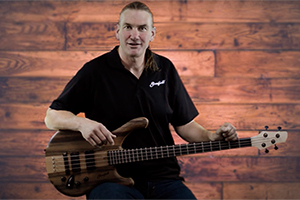

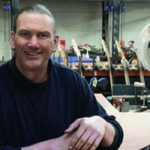
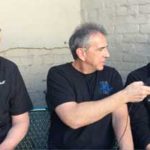

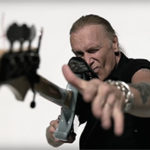
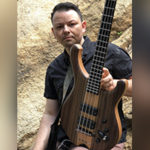
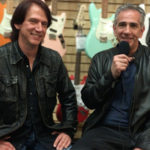
Great story. Very inspirational!